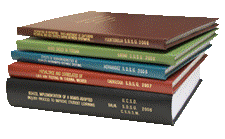Libraries, University of Nebraska-Lincoln

Archival Master’s Theses from the University of Nebraska-Lincoln
Date of this Version
9-1953
Document Type
Thesis
Citation
Thesis (M.S.)—University of Nebraska—Lincoln, 1953. Department of Agricultural Economics.
Abstract
This study has been set up to investigate the division of the consumer’s dollar between the primary producer and the dealer as a basis for setting an equitable price to the farmer. During and after the depression years economists in the Bureau of Agricultural Economics took a great deal of interest in the division of the consumer’s dollar between the farm producer and the marketing system. Many economists assumed that the producer did not get an adequate share of the consumer’s dollar. If this is still true, the reason may be that the present pricing systems are complicated and vague and that they reflect superior bargaining advantage for the dealer.
An effort will be made to assemble as much information as possible about the pricing plans now in use, how they operate, and what could be done to make the plans work more smoothly.
In this study of pricing fluid milk it will be necessary for an investigation to be made of the collective bargaining involved in the setting of prices. The theoretical discussion of bargaining will be handled mainly from the position of the milk producers because the study is primarily interested in producers’ prices and pay plans. The dealer’s position in the bargaining process will be discussed from the theoretical standpoint, but there will be no detailed discussion of his position.
The data on pricing plans, producer prices, volume of milk, retail prices and market organization, for the areas of Grand Island, Hastings, Norfolk, North Platte and Scottsbluff were obtained from interviews in the markets. In Grand Island, Hastings, and Norfolk the payroll records of producers were obtained from the cooperatives in these markets. In the other two markets information was obtained from persons interested in the milk industry. The data for the Omaha market were obtained from the Market Statistics published every month by the Market Administrators Office for Federal Milk Order No. 35. Information about Federal Orders was obtained from the United States Department of Agriculture, Production and Marketing Administration, Dairy Branch, Washington, D. C. The retail milk prices for the Omaha market were obtained from the “Fluid Milk and Cream Report” in the Milk Plant Monthly, a monthly milk industry publication. Other data were taken from Nebraska Agricultural Statistics Preliminary Report, 1951.
Advisor: Clarence J. Miller


Comments
Copyright 1953, the author. Used by permission.